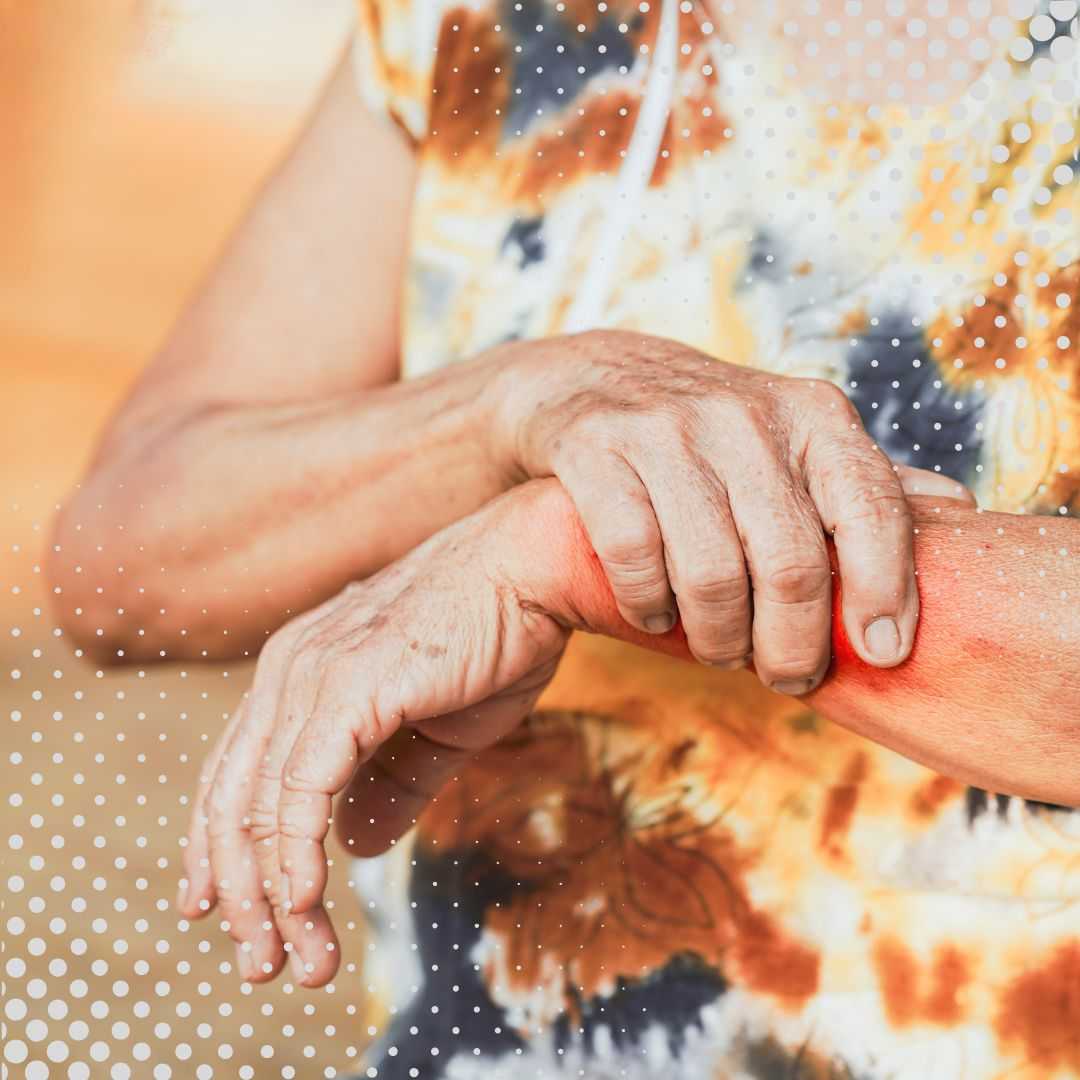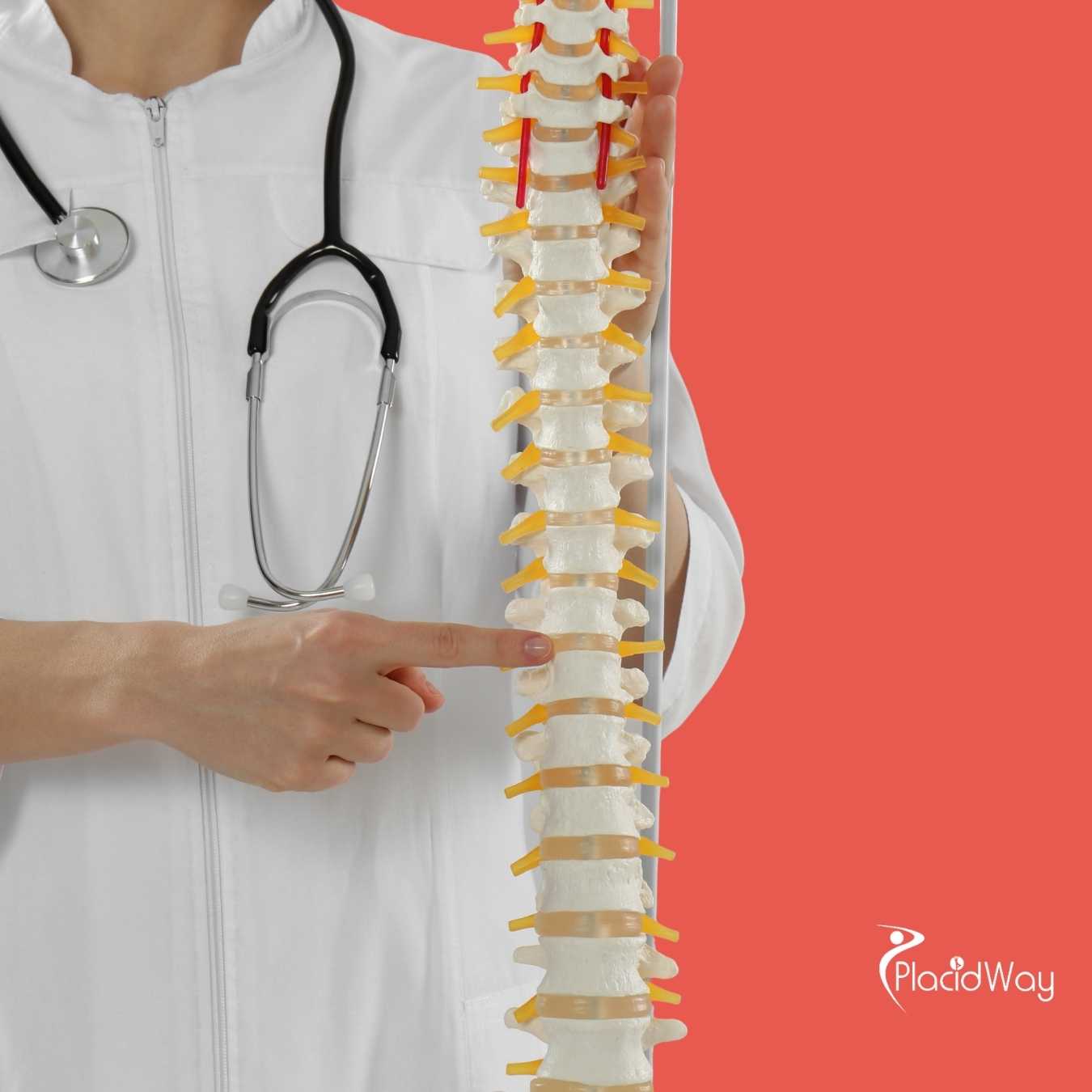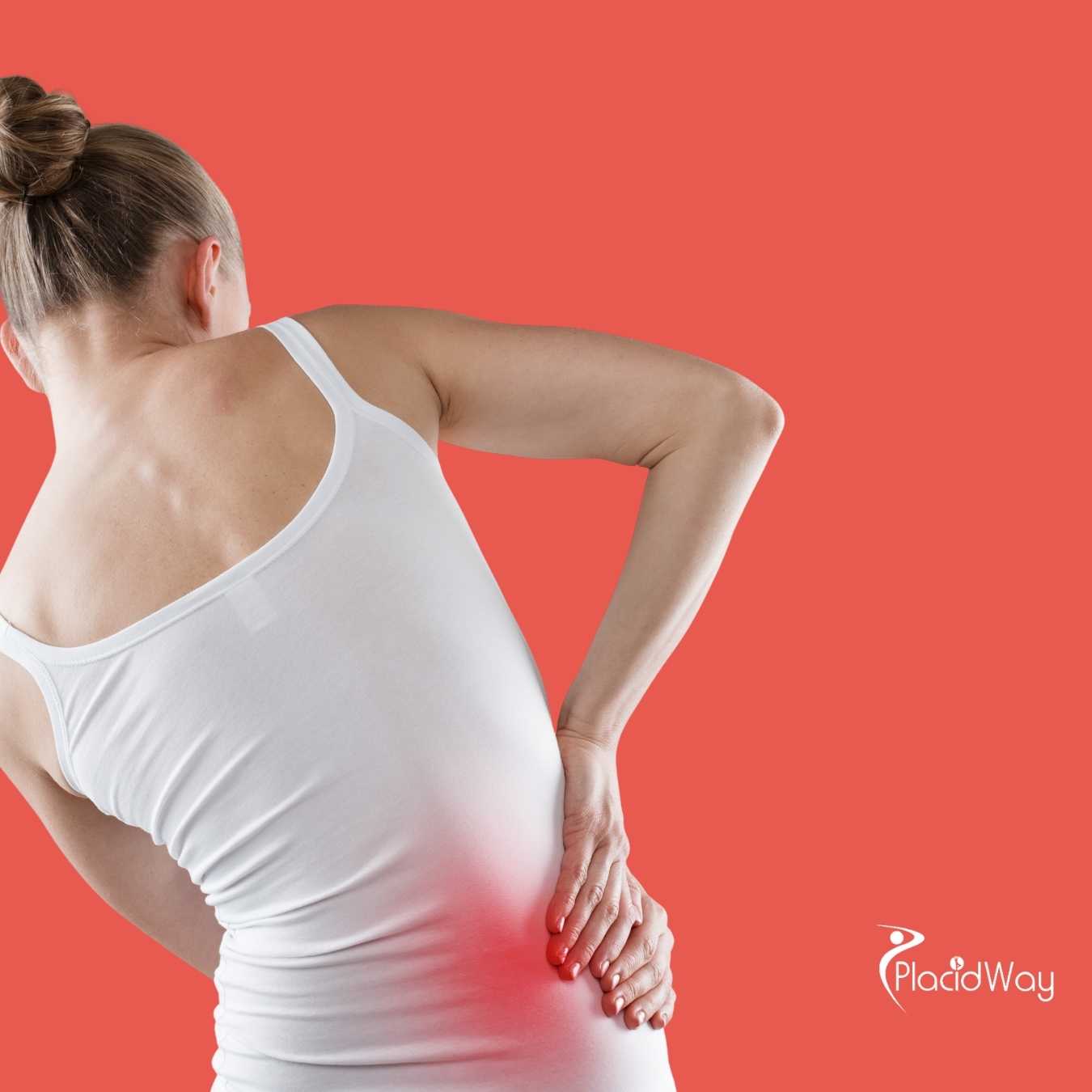Exploring the Latest Advances in CMC Joint Arthritis Treatment
.png)
Living with CMC joint arthritis, also known as thumb basal joint arthritis, can be quite challenging. This condition affects the joint at the base of your thumb, making everyday tasks like gripping, pinching, and twisting difficult and painful. If you've been struggling with the discomfort and limitations of CMC joint arthritis, you might be wondering what new solutions are available. The good news is that medical science continues to advance, offering more effective and less invasive ways to manage and treat this common form of arthritis.
Understanding the latest treatment options can empower you to make informed decisions about your care. From cutting-edge non-surgical interventions that aim to reduce inflammation and promote healing to innovative surgical procedures designed to restore joint function, there's a range of new possibilities. This guide will explore these advancements, helping you understand how they work and if they might be suitable for your condition. We'll also delve into considerations for seeking treatment through medical tourism, offering a broader perspective on your healthcare journey.
What is CMC joint arthritis?
CMC joint arthritis, or carpometacarpal joint arthritis, is a prevalent form of osteoarthritis that specifically targets the joint at the base of your thumb. This joint is crucial for the thumb's wide range of motion, allowing you to pinch, grasp, and perform many essential daily activities. Over time, the protective cartilage that cushions the ends of the bones within this joint can wear away, causing bone to rub against bone.
This friction results in inflammation, pain, stiffness, and a reduced ability to move your thumb effectively. As the condition progresses, you might notice a grinding sensation, a visible bump at the base of your thumb, and a weakening grip. While it often develops with age due to wear and tear, factors like genetics, previous injuries, and repetitive hand movements can also contribute to its onset and severity. Early diagnosis and intervention are key to managing CMC joint arthritis effectively and maintaining hand function.
What are the latest non-surgical treatments for CMC joint arthritis?
For many individuals with early to moderate CMC joint arthritis, non-surgical approaches are the first line of defense. Recent advancements have introduced more sophisticated and targeted options aimed at reducing pain, inflammation, and improving function without the need for surgery. These treatments often focus on either lubricating the joint, reducing nerve pain, or promoting natural healing processes.
One increasingly popular option is platelet-rich plasma (PRP) therapy. This involves drawing a small amount of your own blood, processing it to concentrate the platelets, and then injecting this PRP into the affected joint. Platelets contain growth factors that can help reduce inflammation and potentially stimulate tissue repair. Another emerging non-surgical approach is denervation, which involves disrupting the small nerves that transmit pain signals from the joint, providing significant pain relief for some patients. Additionally, improved hyaluronic acid injections, often called "viscosupplementation," are designed to replenish the joint's natural lubrication, making movement smoother and less painful.
Beyond injections, advanced physical and occupational therapy plays a crucial role. Therapists can design personalized exercise programs to strengthen the muscles supporting the thumb, improve range of motion, and teach ergonomic techniques to protect the joint. Custom-made splints or braces are also often recommended to provide stability and support, especially during activities that exacerbate pain. These comprehensive non-surgical strategies aim to delay or even prevent the need for surgical intervention.
Are there any new surgical techniques for CMC joint arthritis?
When non-surgical treatments no longer provide adequate relief for CMC joint arthritis, surgical intervention may be necessary. Over the years, surgical techniques have evolved significantly, offering more refined and effective options. The primary goal of surgery is to relieve pain, restore stability, and improve the functionality of the thumb.
One common and effective procedure is trapeziectomy, where the small bone (trapezium) that articulates with the thumb metacarpal is removed. What's new are the ways this procedure is augmented. Many surgeons now perform a suspensionplasty or ligament reconstruction with tendon interposition (LRTI), often utilizing a portion of a local tendon to create a "sling" that suspends the thumb metacarpal, preventing it from collapsing into the space left by the removed trapezium. Newer advancements involve using synthetic materials or biological scaffolds in conjunction with or instead of tendon grafts to provide better support and reduce donor site morbidity.
Another area of innovation is CMC joint arthroplasty, or joint replacement. While less common than trapeziectomy for this specific joint, specialized thumb joint implants are being developed. These implants are becoming smaller, more anatomically shaped, and made from advanced materials, aiming for greater durability and a more natural feel. These advanced surgical options offer patients improved long-term outcomes, often leading to significant pain reduction and enhanced thumb function.
What is denervation for thumb arthritis?
Denervation is a promising new treatment for managing pain associated with CMC joint arthritis, particularly for patients who have exhausted other non-surgical options but are not yet ready for or do not qualify for surgery. The underlying principle is simple: if the nerves responsible for transmitting pain signals from the arthritic joint are interrupted, the patient will experience less pain.
This procedure typically involves precise mapping of the sensory nerves around the CMC joint using anatomical landmarks and imaging guidance. Once identified, these small nerves are either surgically cut (surgical denervation) or, more commonly, ablated using radiofrequency energy (radiofrequency denervation). Radiofrequency ablation creates a controlled heat lesion that disrupts the nerve's ability to transmit pain signals. The goal is to provide significant pain relief without causing numbness in the entire thumb or affecting its motor function.
Denervation is considered a minimally invasive option with a relatively quick recovery time compared to traditional surgery. It can be particularly beneficial for patients with significant pain but relatively preserved joint function. While it doesn't address the underlying joint degeneration, it can dramatically improve quality of life by reducing chronic pain, allowing patients to participate more effectively in physical therapy and daily activities. It's an important addition to the spectrum of non-surgical pain management for CMC joint arthritis.
How do biologic injections help with CMC joint arthritis?
Biologic injections represent a cutting-edge approach in the treatment of CMC joint arthritis, harnessing the body's own healing mechanisms to combat the effects of arthritis. Unlike traditional steroid injections that primarily suppress inflammation, biologics aim to modulate the disease process and encourage tissue regeneration. The two most common types of biologic injections used for CMC joint arthritis are Platelet-Rich Plasma (PRP) and stem cell therapies.
PRP therapy, as mentioned earlier, involves concentrating platelets from a patient's blood and injecting them into the affected joint. Platelets release various growth factors that play a crucial role in wound healing and tissue regeneration. In the context of CMC joint arthritis, PRP injections are thought to reduce inflammation, alleviate pain, and potentially stimulate the repair of damaged cartilage and other joint tissues. Many patients report significant pain reduction and improved function following PRP treatments, often with minimal side effects.
Stem cell therapies are another form of biologic injection, though still largely considered experimental for widespread use in arthritis. These involve harvesting stem cells, often from the patient's own bone marrow or adipose (fat) tissue, and injecting them into the arthritic joint. Stem cells have the remarkable ability to differentiate into various cell types and produce anti-inflammatory molecules. The hope is that these cells can help repair damaged cartilage, reduce inflammation, and slow the progression of CMC joint arthritis. While promising, more research is needed to fully establish their long-term efficacy and safety. Both PRP and stem cell injections offer a natural, less invasive alternative for managing CMC joint arthritis.
What is scaffolding implantation for CMC joint arthritis?
Scaffolding implantation is an innovative surgical technique for CMC joint arthritis that builds upon the traditional trapeziectomy procedure. After the removal of the arthritic trapezium bone, which creates a void at the base of the thumb, a scaffold is introduced to maintain space and provide a stable platform for healing. The aim is to prevent the thumb metacarpal from collapsing into the wrist, a common issue that can lead to continued pain and instability if not addressed.
These scaffolds can be made from various biocompatible materials, including:
- Biological materials: Derived from human or animal tissue, designed to integrate with the patient's own tissues and promote natural healing.
- Synthetic materials: Man-made polymers engineered to provide structural support and gradually resorb as the body heals and forms its own fibrous tissue.
The scaffold acts as a temporary framework, encouraging the patient's own connective tissue to grow into the space. This creates a new "cushion" or suspension system for the thumb, providing long-term stability and pain relief.
The benefits of using a scaffold can include reducing the need to harvest a tendon from another part of the body, which can shorten surgical time and minimize discomfort at a secondary site. It offers a structured approach to reconstructing the joint base, aiming for improved biomechanics and functional outcomes. Scaffolding implantation represents an exciting evolution in surgical treatment for advanced CMC joint arthritis, offering patients a durable and effective solution to their pain and functional limitations.
How effective are stem cell therapies for CMC joint arthritis?
Stem cell therapies for CMC joint arthritis** represent a frontier in regenerative medicine, offering hope for patients seeking to avoid or delay surgery. These treatments leverage the unique properties of stem cells – their ability to self-renew and differentiate into various cell types, as well as their potent anti-inflammatory and immunomodulatory effects. The most common sources for stem cells used in these therapies are the patient's own bone marrow (bone marrow aspirate concentrate or BMAC) or adipose (fat) tissue.
When injected into the arthritic CMC joint, stem cells are believed to work by several mechanisms:
- Reducing inflammation: They release anti-inflammatory cytokines, which can alleviate pain and swelling within the joint.
- Promoting tissue repair: They may stimulate the body's own healing processes, potentially aiding in the regeneration of damaged cartilage or surrounding tissues.
- Modulating the immune response: They can help to regulate the immune system, which often plays a role in the progression of arthritis.
While early clinical studies and anecdotal evidence are encouraging, showing improvements in pain, function, and even some signs of cartilage preservation, it's important to note that stem cell therapies for CMC joint arthritis are still largely considered experimental by many medical organizations. Long-term studies with large patient cohorts are needed to definitively establish their efficacy, optimal dosage, and long-term safety profile. Patients considering this treatment should seek out reputable clinics and understand the current state of research and regulatory approval in their region. Despite this, it remains a fascinating area of research with the potential to revolutionize arthritis treatment.
Can CMC joint arthritis treatment be combined with medical tourism?
Medical tourism has become an increasingly popular option for individuals seeking high-quality healthcare, and treatment for CMC joint arthritis is no exception. Many patients choose to travel abroad for various medical procedures, including orthopedic surgeries and advanced regenerative therapies, due to factors such as cost savings, access to specialized treatments, shorter waiting times, or a desire for a different healthcare experience.
For CMC joint arthritis, this can mean accessing innovative surgical techniques, specialized denervation procedures, or advanced biologic injections that may not be readily available or affordable in their home country. Destinations known for medical tourism often boast state-of-the-art hospitals and clinics equipped with the latest technology, staffed by highly skilled surgeons and medical professionals who are often internationally trained. Patients can research and select facilities that specialize in hand surgery and arthritis treatment, ensuring they receive expert care.
Combining CMC joint arthritis treatment with medical tourism also offers the unique opportunity to integrate recovery with travel. Patients might choose a destination that allows for a relaxing environment conducive to healing, or one that offers a chance to explore a new culture before or after their procedure. However, careful planning and thorough research are essential to ensure a safe and successful medical journey abroad.
What are the benefits of seeking CMC joint arthritis treatment abroad, for example, in Turkey or Mexico?
Many countries, including Turkey and Mexico, have become leading destinations for medical tourism due to their comprehensive healthcare offerings, particularly in orthopedic and hand surgery. The benefits of seeking CMC joint arthritis treatment in these regions are multi-faceted and appeal to a diverse range of patients.
One of the most compelling advantages is cost-effectiveness. Procedures like trapeziectomy with suspensionplasty, arthroplasty, or biologic injections can be significantly more affordable in countries like Turkey or Mexico compared to Western Europe or North America, even when factoring in travel and accommodation expenses. This allows patients to receive high-quality care without the prohibitive financial burden often associated with such treatments at home.
Furthermore, these countries often feature:
- Highly Qualified Specialists: Many surgeons and medical professionals in leading medical tourism destinations are internationally trained and have extensive experience in treating CMC joint arthritis.
- State-of-the-Art Facilities: Hospitals and clinics catering to international patients are typically equipped with modern technology and adhere to international standards of care and accreditation.
- Reduced Waiting Times: Patients can often schedule their procedures much faster than in countries with public healthcare systems facing long waiting lists.
- Integrated Travel Experience: The opportunity to combine medical treatment with a trip to a culturally rich or scenic destination can make the recovery process more enjoyable and less stressful.
For patients considering CMC joint arthritis treatment abroad, countries like Turkey and Mexico present attractive options, balancing advanced medical care with considerable financial and experiential benefits. Thorough research into clinic accreditations, surgeon qualifications, and patient reviews is always recommended to ensure a positive outcome.
What should I consider when planning CMC joint arthritis surgery through medical tourism?
Embarking on medical tourism for CMC joint arthritis surgery requires careful planning and due diligence to ensure a safe and successful outcome. While the benefits can be substantial, it's crucial to address several factors before making your decision.
First and foremost, research the healthcare facility and surgeon thoroughly. Look for clinics that are internationally accredited (e.g., JCI accreditation), as this indicates adherence to global standards of patient safety and quality of care. Verify the surgeon's credentials, experience with CMC joint arthritis procedures, and read patient testimonials. Understanding the exact procedure being offered, its success rates, and potential risks is paramount. Ask for detailed treatment plans, including all pre-operative tests, the surgery itself, and post-operative care.
Other important considerations include:
- Costs and Inclusions: Obtain a transparent breakdown of all costs, including the surgery, anesthesia, hospital stay, medications, and rehabilitation. Clarify what is and isn't included in the quoted price to avoid hidden fees.
- Pre- and Post-operative Care: Understand how your initial consultation will be conducted (e.g., telemedicine) and what follow-up care is provided once you return home. Discuss rehabilitation protocols and ensure you have a plan for physical therapy.
- Communication: Ensure there will be clear communication with the medical team, especially if there's a language barrier. Many international clinics offer interpreters or have English-speaking staff.
- Travel Logistics: Plan for travel, accommodation, and the necessary duration of stay, which might include several days before and weeks after surgery for recovery and initial follow-ups.
- Insurance and Complications: Understand how your travel insurance or health insurance might cover medical tourism, especially in case of complications.
Taking these steps will help you navigate the process confidently and secure the best possible care for your CMC joint arthritis through medical tourism.
Ready to explore advanced CMC joint arthritis treatments and discover global healthcare solutions? Visit PlacidWay to connect with leading clinics and specialists worldwide.


.png)









Share this listing